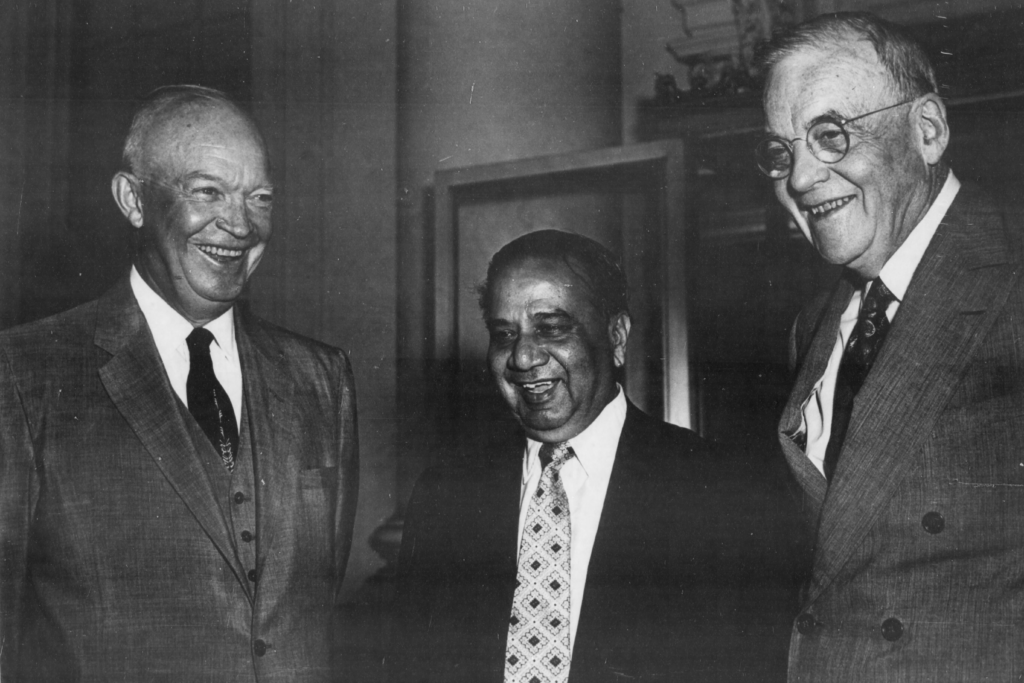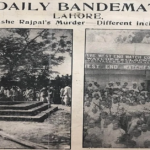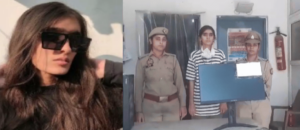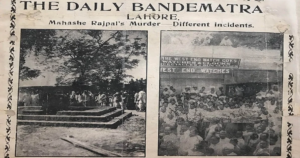A historical event of Bengal is going to be shown on the big screen soon. In which the biggest communal violence in the history of Bengal will be seen. Based on the painful events of August 16, 1946, the film ‘Maa Kali: The Story of Motherland Maa Kali movie is about those Bengalis who suffered before the partition, during the partition and even after that. But the main thing in it is Direct Action, whose words scream rape, “orgy of murder”, loot, and arson”, “about ten thousand deaths……

A lot has been given in the film Maa Kali: The Story of Motherland. Along with the story of the disappearance of the Ghosh family, one incident has been shown prominently among those incidents which is called ‘Direct Action Day’ or “Great Calcutta Killing” on 16 August 1946. Some people may say that what is there in this movie that everyone should watch. Actually, the same truth is in the movie which was in Kerala Story and Kashmir Files. This is the reason why Raima Sen has started receiving threats regarding this Hindi film. You can understand who would be giving threats and why, maybe the same people who do not want the truth of the Great Calcutta Killing to come out. Because these large-scale riots that went on for four days between 16 and 19 August in Bengal, lakhs of Indians were killed on the orders of Jinnah and his scoundrel stooge Suhrawardy. There were…

Actually the exact number has never been known and will never be known. It is just an estimate. The figure is minimum 6,000 and maximum 10,000 as stated by the investigation commission in 1991 but the figure is said to be much bigger than this…
In such a situation, a question may arise in the mind that why did this riot happen? How long ago had the Muslim League of a devil like Jinnah made preparations of which Hindus had no clue.
The story of this massacre begins with a bastard who was born in a rich family in Midnapore, Bengal. His name was Hussain Suhrawardy. He studied law from St. Xavier’s to Oxford and started practising in Calcutta. He also got married to Fatima, the daughter of a judge of Calcutta High Court. The next year a son was born but Fatima died within two years and that son also died by the time he turned 20. Hussain was left alone in his life.
In the year 1923, Hussain Suhrawardy joined a party named Swaraj. But soon its religion started to stir and in 1926 Hussain Suhrawardy formed the Azad Muslim Party.

Now the drama of fighting for the workers also started. Around 36 trade unions were formed, which included unions of fishermen, rickshaw pullers, cart pushers etc. In the 1929 council election, a separate organization named Bengal Muslim Election Board was formed. In 1937 elections, United Muslim Party was also formed to contest elections. This was the time when the freedom movement was at its peak in the country. During that time, Muhammad Ali Jinnah had put the idea of a separate Pakistan in everyone’s mind. The political situation had become such that many people started seeing Hindus and Muslims as different. Hussain Suhrawardy had also jumped into it with religious faith.
Elections were held in 1937. Out of the 11 British Indian provinces, only in Bengal the Muslim League was able to form a government in alliance with Fazlul Haq’s Krishak Praja Party. The credit for this goes to the ability of Hussain Suhrawardy. He had already become very famous in Bengal. He was the party secretary from 1937-43. But during this time the strength of the Muslim League increased a lot.
After the Quit India Movement of 1942, the demand for Pakistan increased a lot. The Muslim League did not even participate in this movement. After this, from the Cripps Mission to the Cabinet Mission, the Congress and the League did not agree in any of them. Slowly it started being decided that now two countries are certain to be formed. Although at that time there was no TV or social media, so the demand for a separate Pakistan was only in politics, it was only in the minds of Muslim leaders, this idea did not have much influence among the public.

Then in 1946 elections were held in the country, talks of a separate Pakistan started in mosques, due to which the Muslim League won in Bengal. Out of 121 reserved seats, they got 114 seats. This victory proved that the idea of creating Pakistan had spread in the minds of Muslims as well, and the Muslim League was taking full advantage of this.
But in the middle of all this, Hussain Suhrawardy had a different dream. That dream was of a separate country for Muslims in eastern India, which would include the whole of Bengal, Assam and some districts of Bihar. It was planned to call it Greater Azad Bengal. Hussain Suhrawardy was the Chief Minister of Bengal at that time. It is amazing to see that Hindu leaders of Bengal, Sharat Chandra Bose, Kiran Shankar Roy and Satya Ranjan Bakshi were also involved in this plan that drank the cup of secularism. But this dream was soon shattered because each state had a different language, due to which it could not get the support of the general public.
But during this time an incident definitely happened which changed all relations. The Cabinet Mission that came from Britain had planned that power would be transferred by keeping India under Dominion Status i.e. under Britain. But the Muslim League was not ready to make any kind of alliance with the Congress. They argued that the Hindu areas should be divided into Hindustan and the Muslim areas into Pakistan. The Congress did not agree to this.

The devil named Jinnah had gone mad over this. He wanted to make the British and Congress realize the power of religion. After the riots of the last two decades in Lahore and Peshawar, it was now the turn of Jinnah, the victim of religious fanaticism of eastern India. He declared ‘Direct Action Day’ on 16 August 1946 in Calcutta. At that time, Hindu Mahasabha had also gathered its support along with Marwari traders in Bengal. Bengal was divided into Hindus and Muslims. The leaders had an idea of what could happen. New news of frenzy and madness came every day. But everyone kept waiting. On 16 August, clashes started with demonstrations. And it turned into riots. This riot lasted for 6 days. Thousands of people died and lakhs became homeless. Hussain Suhrawardy was accused of personally visiting Lalbazar police station and inspecting it. For the riots. He had given free hand to the police. To kill. Governor Sir Frederick Burrow and Lieutenant General Sir Francis Tucker directly accused Suhrawardy that he had given a day’s leave to the police for direct action. But they did not explain why he had stopped his army. Because when the army came out on the streets, the rioters ran away. The theory was simple – weak Hindus were to be killed. Kafir women were to be raped and massacred, their homes and businesses were to be taken over and their names were to be erased from history…
On the midnight of August 1947, a line was drawn on the map of India on the basis of religion. Jinnah got a separate country in the name of religion but after the formation of Pakistan, Jinnah’s bastard stooge Suhrawardy started being sidelined. Because there was a fear that Suhrawardy might insist on his demand for Bengal. Suhrawardy was not even made the Chief Minister of East Pakistan. In his place, a small leader Nazimuddin was given power. This was an insult to Suhrawardy. Now to take revenge for his insult, he sowed a new seed in East Pakistan. That is, the same Suhrawardy who created riots, violence and killing to create Pakistan, that Suhrawardy was put in jail there. Actually, Suhrawardy had a disciple named Mujibur Rahman. He revived the Awami League and started demanding a separate Bangladesh on the basis of language, formed Mukti Bahini and started clashing with the army of Pakistan. In 1971, Bangladesh was separated from Pakistan and created. Suhrawardy’s Greater Bengal could not be formed, but Pakistan definitely broke.

You must be thinking what happened to Suhrawardy. It is said that one gets punished for bad deeds. Suhrawardy became a thorn in the eyes of Pakistan’s army generals. Therefore, in the end, that Muslim leader, accused of killing thousands of Hindus, was thrown into Lebanon, far away from India-Pakistan-Bengal, where he died screaming in solitude… What remains behind are the memories of those people who got lost in the riots and whose whereabouts are unknown till date. The film ‘Maa Kali: The Story of Motherland’, based on the painful events of 16 August, 1946, is the story of those lost people, women raped by religious fanaticism and suffering children, which will soon be brought on screen. Perhaps once again the murder of thousands of people will be called propaganda, but this truth is known to every Bengali who has lived and suffered it…
BY-Rajeev Choudhary https://www.linkedin.com/in/rajeev-choudhary










More Stories
Who is the hunter and who is the prey in the drug game of death?
Is the sun about to set on the British Raj forever?
How are people winning crores of rupees by forming a dream app team?